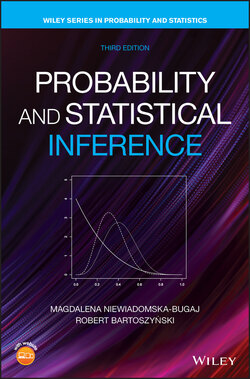Читать книгу Probability and Statistical Inference - Robert Bartoszynski - Страница 79
3.3 Binomial Coefficients
ОглавлениеThe permutations discussed in Section 3.2 were ordered selections from a certain set. Often, these orders are irrelevant, as we are interested only in the total number of possible choices. Such choices are referred to as combinations.
Definition 3.3.1 A subset of size selected from a set of size (regardless of the order in which this subset was selected) is called a combination of out of .
Theorem 3.3.1 The number of combinations of out of , , is given by
(3.8)
Proof By Theorem 3.2.5 we have different permutations of out of elements. Each permutation determines the set of elements selected and their order. Consequently, permutations lead to the same combination, which proves (3.8).
The ratio appears in various contexts, and it is convenient to have a special symbol for it.
Definition 3.3.2 The ratio
(3.9)
is called a binomial coefficient and is denoted by , to be read as “ choose .”
Using (3.3), we have
(3.10)
Observe, however, that (3.10) requires to be an integer, whereas in (3.9) can be any real number ( has to be an integer in both cases).
